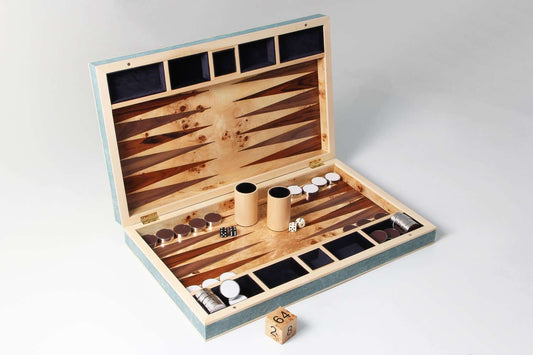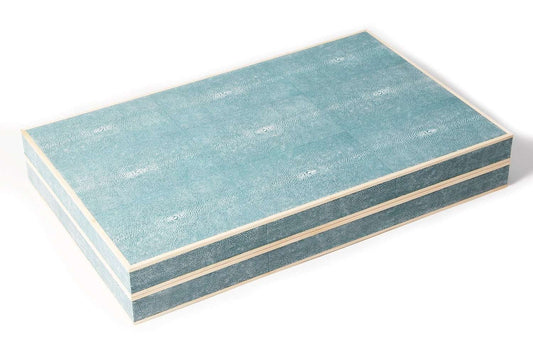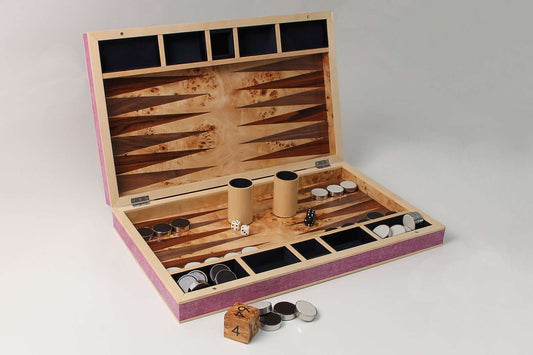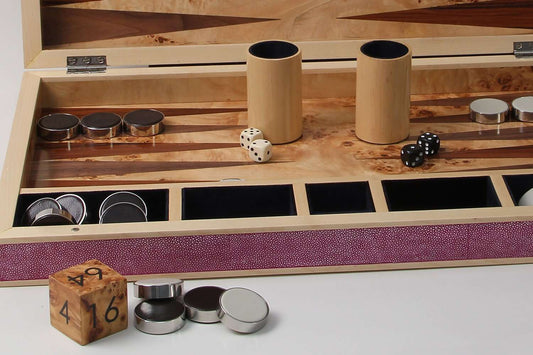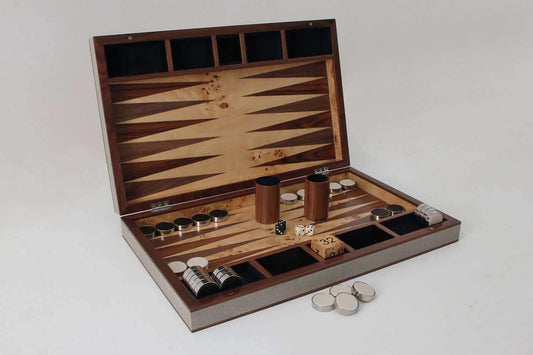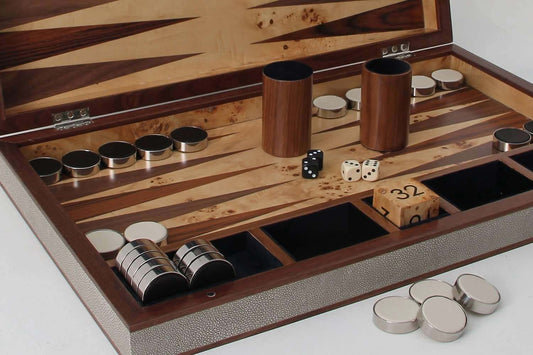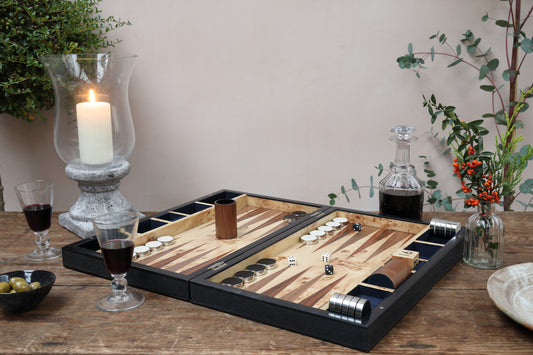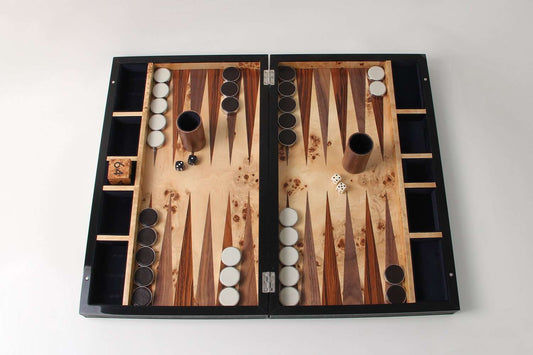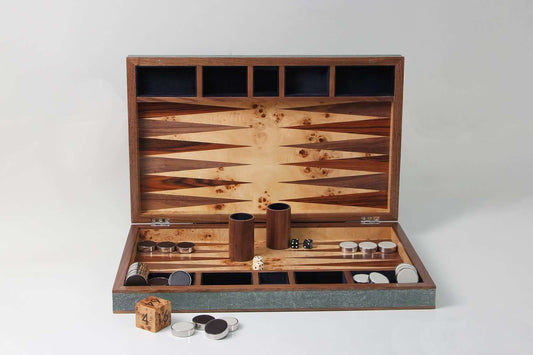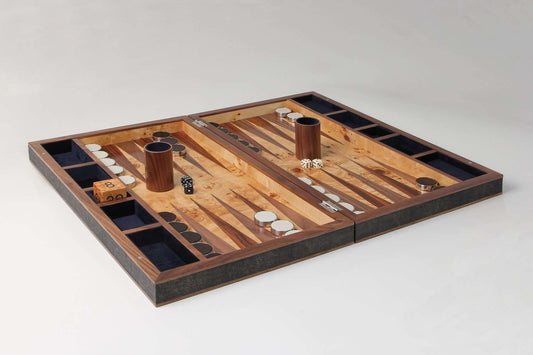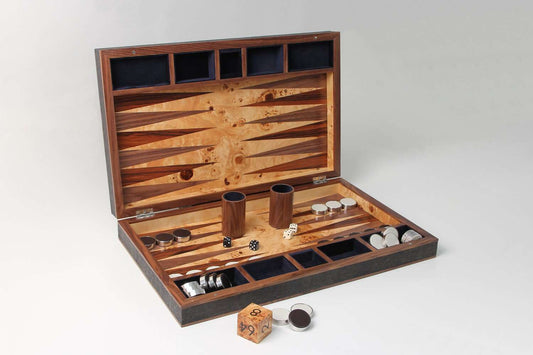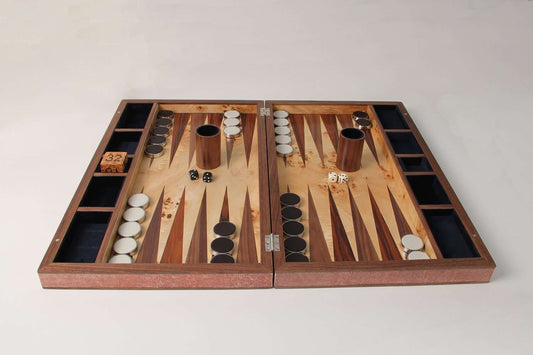Backgammon Boards
Collection: Backgammon Boards
Enjoy playing Backgammon in style with one of our gorgeous Backgammon Boards. Each Backgammon set is hand made using exotic woods and of course our unique faux shagreen.
-
Classic Backgammon Board in Teal
Regular price £800.00 GBPRegular priceUnit price / per -
Wooden Backgammon Set in Pink shagreen
Regular price £800.00 GBPRegular priceUnit price / per -
Modern Backgammon Board in Barley
Regular price £800.00 GBPRegular priceUnit price / per -
Large Backgammon Board in Caviar Black
Regular price £850.00 GBPRegular priceUnit price / per -
Backgammon Set in Lincoln Green Shagreen
Regular price £800.00 GBPRegular priceUnit price / per -
Luxury Backgammon Board in Seal Brown
Regular price £800.00 GBPRegular priceUnit price / per -
Faux leather Backgammon Board in Coral Shagreen
Regular price £800.00 GBPRegular priceUnit price / per -
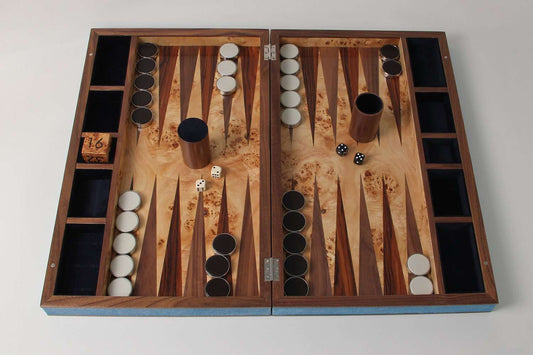
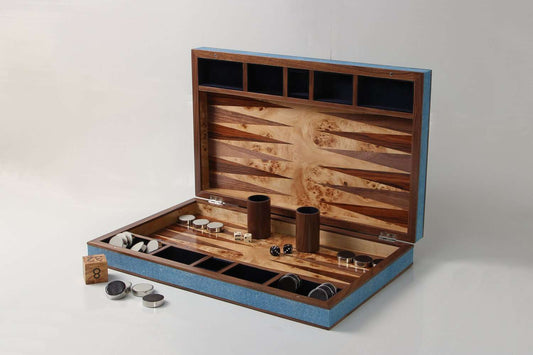 Back soon
Back soonDeluxe Backgammon Board in Duke Blue
Regular price £800.00 GBPRegular priceUnit price / per -
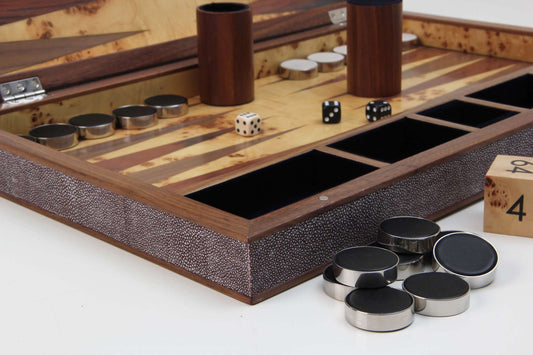
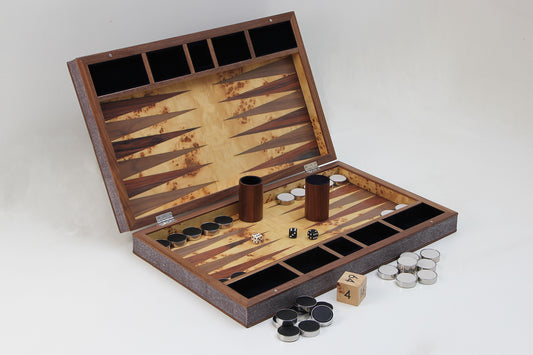 Back soon
Back soonGorgeous Backgammon Board in Mulberry
Regular price £800.00 GBPRegular priceUnit price / per

